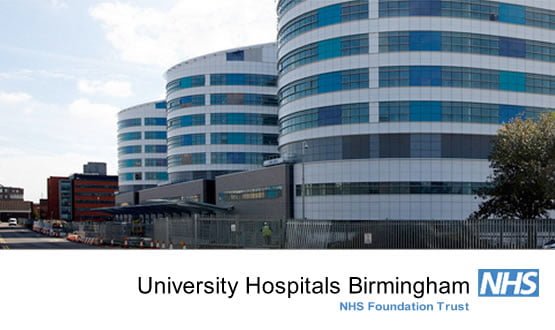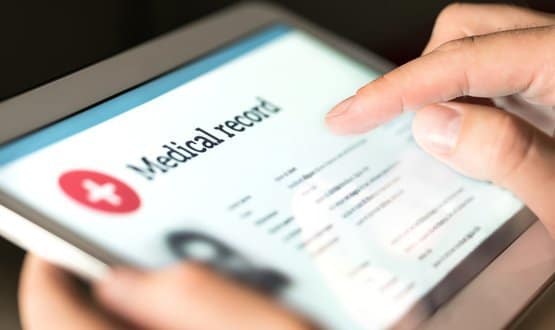My kind of thing

‘Putting patients first’ has long been a favoured mantra of politicians and senior policy-makers in healthcare.
It captures the notion being that patients should have a stronger voice in decisions about their health and care, and that services should better reflect their needs and preferences.
Yet according to a recent report by The King’s Fund, there is still a long way to go; and those calls to put patients first don’t really add up to a coherent programme of work to get the NHS there.
One trust that has found a way forward is University Hospitals Birmingham NHS Foundation Trust, which has developed an innovative patient portal – named myhealth@QEHB after the Queen Elizabeth Hospital Birmingham.
It was put together by the technical development and informatics team at the trust and launched in 2012, after a successful pilot with liver patients.
By harnessing data from multiple sources across the hospital, including patient administration and clinical data systems, the platform enables patients with long-term conditions to remotely access their entire healthcare record and upload information to it, including GP referral information, correspondence and test results.
myhealth@QEHB also enables patients to view and add appointments within and away from the hospital, and receive reminders. They can submit information directly to consultants, allowing them to respond instantly where necessary. And they can interact with other patients, creating their own support networks for help, advice or friendship.
The system has already enabled more than 6,000 patients across numerous specialties to access their health record online; while an additional 25,000 licences to use the system are being made available over the next five years.
A mine of information
“myhealth@QEHB is the UK's first patient-focused web based support network to contain such breadth and depth of clinical information,” says Daniel Ray, the trust’s director of informatics and chair of EHI’s Health CIO Network advisory group.
“The fact that we’re well advanced with our electronic patient record means we can run the patient view on top of our internal EPR.
“I doubt if there is currently any other patient portal in England where a patient can logon and access all of their inpatient drug administration history, observations, lab results and so forth.
“By implementing this innovative system, we have truly unlocked health records and empowered patients to be directly involved in their treatment and care.”
Positive feedback
Ray says the system enables the two-way sharing of care plans, enabling clinicians and patients to better manage disease treatment plans.
“Patients often have to travel considerable distances to hospital, but myhealth@QEHB gives them remote access to their health records,” he says. “In practical terms, it allows them to log test results remotely and receive an alert to tell them or their carer that it’s time to take medication, for example.”
This not only makes things easier for patients, but makes it less likely that they will contact staff to ask for information they already have. “It means clinicians have more time to focus on delivering treatment and patient care,” Ray argues, adding that it eliminates a lot of wasteful paper files and letters.
Moreover, it helps to enhance patient education through self-care treatment competencies, whereby patients learn how to partake in their own treatment, enabling greater self-management of their condition.
And, needless to say, patients are also involved in the development of the portal itself. “Patients are directly involved in developments to take the system forward through regular user groups. They provide feedback on what functionality to add and are also involved in testing new versions of the system.”
Replication potential
myhealth@QEHB is currently targeted towards patients with long-term conditions, because it was felt this cohort would gain the greatest benefits from it. However, as the system becomes more mature, more patients will be included.
An existing online facility known as ‘Myday@QEHB’, which captures the series of events that happen to a patient whilst in hospital is being incorporated into myhealth@QEHB, to help people prepare themselves for a hospital stay.
Meanwhile, a number of other hospitals are actively considering implementing the platform, and Ray believes myhealth@QEHB has potential to be offered in some format to any patient entering a hospital.
“Work is already underway to develop the portal for Birmingham Children’s Hospital and University Hospitals Birmingham is being approached by other trusts across the country to learn how myhealth@QEHB could be implemented in their own healthcare settings,” Ray says.
He believes there is also huge potential for the portal to be replicated in some form to primary and secondary care, so that patients can view and share information across the entire pathway.
“myhealth@QEHB will improve communication between healthcare professionals, as a patient will be able to show their record to any doctor or nurse they choose,” he says.
myhealth@QEHB has also been recognised as a platform for recruiting patients onto research trials. “This will allow patients to be tracked more efficiently throughout the clinical trials process and have access to pioneering and lifesaving drugs, for example.”
Proof is in the pudding
Four years ago, Gary Taylor suffered acute liver failure and was diagnosed with autoimmune hepatitis. He also has an overlap condition called primary sclerosing cholangitis or PSC.
“It seems every time a test comes back, I’m the exception to the norm,” says Gary, who heads up digital for a media agency in Stratford-up-Avon. “I’m also part of a PhD student’s study at the moment. I’m quite unique in my condition and how I respond to treatment.”
Due to the number of tests he has undergone, and with regular MRI scans to monitor his condition, Gary was keen to sign up to myhealth@QEHB to help him track his progress. He was told about the system by his consultant, Dr James Ferguson, who supervised the pilot for the system in 2011.
“When James first mentioned it, I thought it was a great idea,” says Gary. “My background is in technology and web development, so I’m more than comfortable accessing information in this way.
“I use it to access my results online, see appointments and letters, without the need to keep having to go the GP. Because I’m a technical person, I like to be organised. I like the idea of being able to look back on things and ask: is there a pattern?
“The system helps me better understand my condition, but the main thing is the convenience. I can get answers immediately by logging on, rather than picking up the phone. I think myhealth@QEHB is a fantastic idea and something really positive for patients.”
Journey of discovery
Ray is confident that myhealth@QEHB will ultimately lead to better outcomes and quality of life for patients like Gary. Indeed, he says his own mother greatly benefitted from the system after developing breast cancer.
“It is tremendously gratifying to me personally that the portal made her feel more at ease and better informed about her condition by being able to access her medical record online.
He says UHB is continually connecting the portal to telehealth devices which direct questionnaires to patients to monitor their symptoms, vital signs and treatment compliance.
As a result, a recent survey conducted by the trust found that more than 77% of patients actively using the portal agreed that it made them feel more prepared for hospital visits. Some 87% of survey respondents also said they find the home page and laboratory results pages most useful.
“Increasingly, we’re hoping myhealth@QEHB will also improve patients’ communication with their GP, for example, allowing them to log in at the surgery and discuss their results before a letter arrives through the post,” says Ray.
“Moreover, we’re currently piloting an ‘open offer’ in urology and diabetes, whereby every single patient attending a clinic will be offered access to the system.
“We consider myhealth@QEHB to be the UK's first patient-focused social network – although we prefer the term support network," he says.
At the end of the day, it is simple, flexible, modern and empowering. We've really only begun the journey of discovering just how powerful a tool this could be to the Trust and our patients,” Ray concludes.




